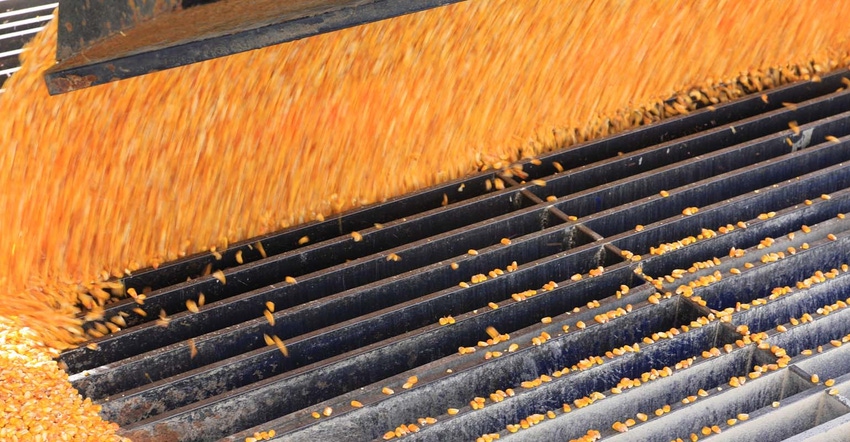March 2, 2018

More than 30 scientists and start-up companies answered the global call to bring forth their best ideas focused on the conversion of corn into bio-renewable chemicals for the inaugural Consider Corn Challenge, an open innovation contest hosted by the National Corn Growers Association.
Six new technologies were highlighted at Commodity Classic in Anaheim, Calif., as winners of the Consider Corn Challenge. Each winner will receive a $25,000 cash prize. NCGA will also explore additional opportunities to support contest entries throughout their development and/or commercialization. The contest generated 33 submissions from eight countries along with nearly 4,500 website visits from 82 countries.
The winners of the competition:
Lygos – The Berkley, Calif., company is producing Bio-Malonic acid (Bio-MA) from renewable sugars using cutting edge biotechnology. It is used today in diverse markets, including high-tech composites and coatings, electronics, flavors & fragrances, and pharmaceuticals. Traditionally, Malonic Acid is made in China from petroleum, through an expensive process that employs hazardous chemicals. Lygos’ system uses non-toxic chemicals and mild conditions resulting in an environmentally friendly process with superior economics.
Annikki - Technology to produce FDCA (furandicarboxylic acid), a replacement for petroleum derived terephthalic acid for plastic bottles, fibers, and nylons was the winning entry from the Chicago, Ill., company. FDCA is a versatile bio-advantaged molecule with the potential to replace 100 million tons of petrochemicals. FDCA is not only 100% renewable, it also provides superior performance properties. This allows plastic soda bottles to be lighter, use less energy in manufacturing and extend the shelf life for carbonated products.
Iowa Corn Promotion Board – This technology developed by Iowa corn farmers, is for the production of MEG (monoethylene glycol). MEG has a range of diverse applications from coolants and heat transfer fluid to packaging material. Today, many major consumer products groups are searching for ways to reduce their packaging’s environmental footprint and Iowa Corn’s bio-renewable MEG may be the answer.
Vertimass – Vertimass of Irvine, Calif., is seeking to produce aromatic chemicals using renewable corn ethanol to replace petrochemicals. This process represents a potentially very large new market, diversifying opportunities for ethanol plants and increasing corn utilization.
Sasya – Sasya, of Maple Grove, Minn., is producing methylmalonic acid which can compete in methyl methacrylate markets for making acrylic glass, and adhesives.
South Dakotas State University – SDSU’s efforts are focused using renewable precursors such as glycerol and lactic acid to make unsaturated polyester resins (UPRs). Today, UPRs are used to make large plastic tanks, as a binder in fiber glass sheets and other reinforced plastics.
“The renewables industry is already an important driver for the U.S. economy generating billions of dollars in revenue but the additional potential in the emerging bio-economy remains largely untapped,” said Bruce Peterson, chairman of NCGA’s Feed Food and Industrial Action Team. “NCGA is proud to showcase these great technologies. Continued improvements in sustainable corn production underscore corn’s ability to significantly improve the environmental footprint of many common household products.”
“According to a USDA study from 2016, the U.S. bio-based products industry currently creates 4.2 million jobs and generates $393 billion in value added contributions to our economy, but there are many exciting market segments yet to be explored,” NCGA Director of Market Development Jim Bauman said.
“Today’s winners exemplify the potential for corn to play an ever-expanding role within the bio-economy. The ability to produce economically competitive, bio-advantaged molecules, compared to traditional petrochemicals, is driving many companies to review how corn can play a larger role in their future procurement strategy.”
Being immersed in the latest ideas and technology related to machinery, crop inputs and agronomic practices is expected at the annual Commodity Classic, Peterson noted, but it is especially meaningful to make this announcement of new, high potential corn uses at a time when farmers are facing another year of low prices.
“This challenge is geared to inspire new concepts, approaches and technologies that will help drive innovation and corn’s value. The growing productive capacity of corn farmers makes it essential that we continue to find innovative new ways to use this versatile crop,” said Peterson. “The Consider Corn Challenge will bring positive attention to our winners and help them move closer to commercialization. Likewise, our expectation is this Open Innovation competition will raise awareness of the capabilities and benefits of corn throughout the scientific community.”
Source: National Corn Growers Association
You May Also Like




